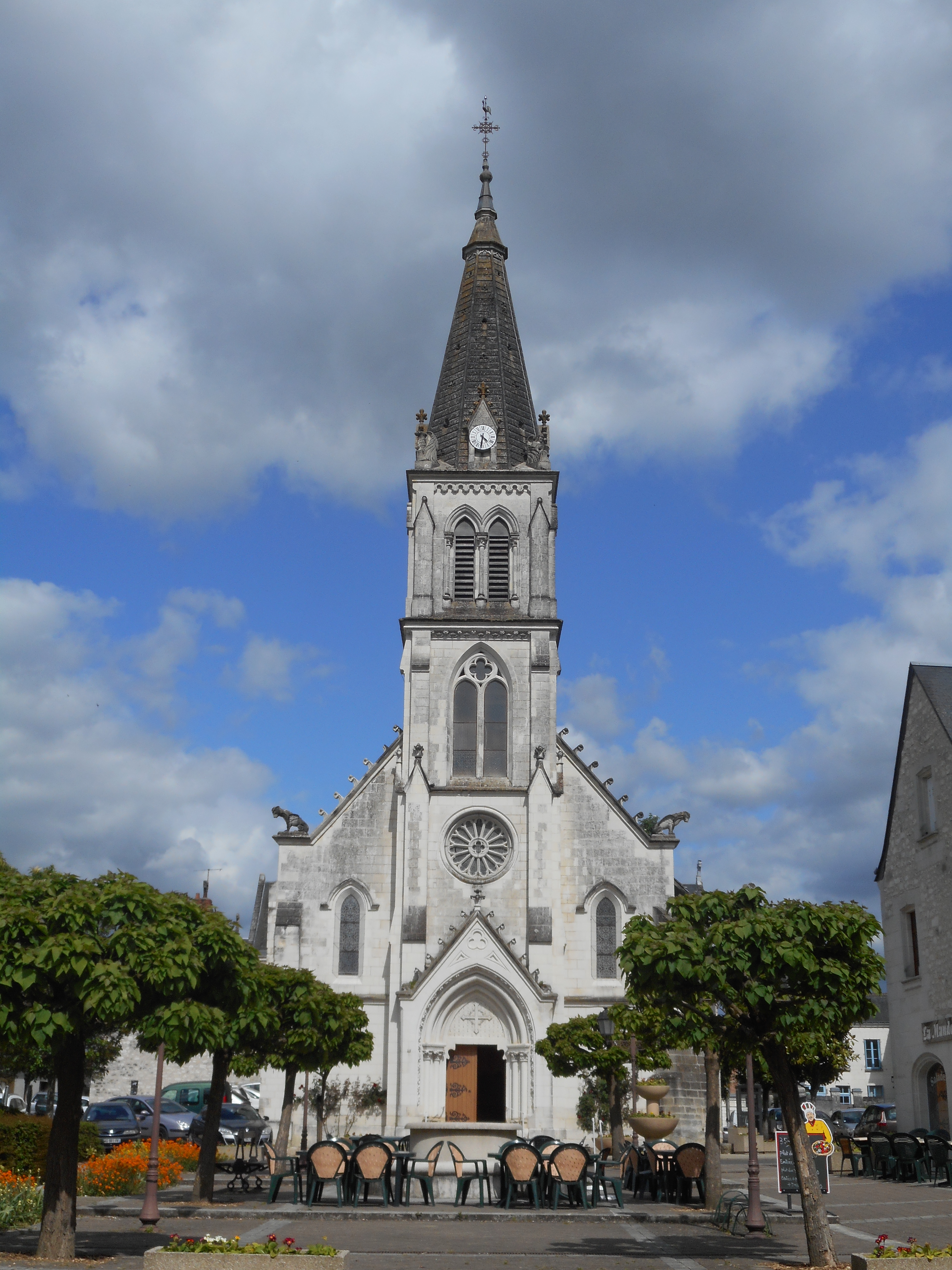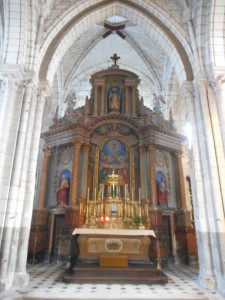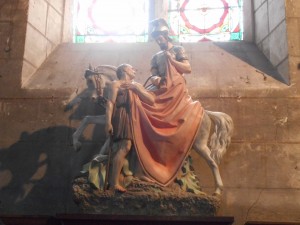L’église Saint-Martin a été fondée au XIIe siècle, mais il ne reste plus que des vestiges de l’église primitive dont le plus important se trouve être le mur septentrional de la nef dont le mur sud fut reconstruit au XIVe siècle et qui est précédé d’une façade et d’un clocher modernes. Deux chapelles latérales, l’une au nord, l’autre au midi sont également modernes.
Le choeur fut reconstruit au XIIIe siècle ou au XIVe et repris au XVe siècle. Deux grosses colonnes engagées, à l’entrée du chœur, supportent l’arc triomphal. Sur le mur extérieur sud du chœur, trois baies superposées, l’une en plein cintre, romane, l’autre en arc brisé, gothique, la troisième néo-gothique, dont les deux plus anciennes sont murées, montrent les différentes époques de construction.
L’église abrite une statue de la charité de saint Martin et une statue de saint Martin évêque au sommet d’un retable du XVIIe siècle.
La statue se trouve au dessus du retable de bois dorée du XVIIe siècle, dans le chœur de l’église. Saint Martin est représenté en évêque, mitré, avec une étole rouge et dorée. Il tient sa crosse dans la main gauche et lève l’autre main dans un geste de bénédiction.
La charité de saint Martin se trouve dans la nef de l’église. Le groupe sculpté est en pierre de couleur claire. Saint Martin est présenté en soldat romain, il coupe avec son épée sa chlamyde dont il va faire don au pauvre en béquille. L’aspect très martial de la charité est renforcé par le geste du pauvre mettant la main sur le cœur en signe d’allégeance.
L’édifice est inscrit Monument Historique par arrêté le 12 juin 1926 : PA00097813
The church of St. Martin was founded in the 12th century, but there are only vestiges of the original church, the most important of which is the northern wall of the nave, the southern wall of which was rebuilt in the 14th century and is preceded by a modern façade and bell tower. Two side chapels, one to the north and one to the south, are also modern.
The choir was rebuilt in the 13th or 14th century and rebuilt in the 15th century. Two large engaged columns at the entrance to the choir support the triumphal arch. On the south outer wall of the choir, three superimposed bays, one round-headed, Romanesque, the other with a pointed arch, Gothic, and the third neo-Gothic, the two oldest of which are walled in, show the different periods of construction.
The church houses a statue of the charity of St Martin and a statue of St Martin the bishop at the top of a 17th century altarpiece.
The statue stands atop the 17th century gilded wooden altarpiece in the chancel of the church. Saint Martin is depicted as a bishop, mitred, with a red and gold stole. He holds his crozier in his left hand and raises his other hand in a gesture of blessing.
The charity of St. Martin is located in the nave of the church. The carved group is made of light-coloured stone. Saint Martin is shown as a Roman soldier, cutting off his chlamydia with his sword and giving it to the poor man on a crutch. The very martial aspect of the charity is reinforced by the gesture of the poor man putting his hand on his heart as a sign of allegiance.
The building was listed as a historical monument by decree on 12 June 1926: PA00097813

 "/>
"/>

